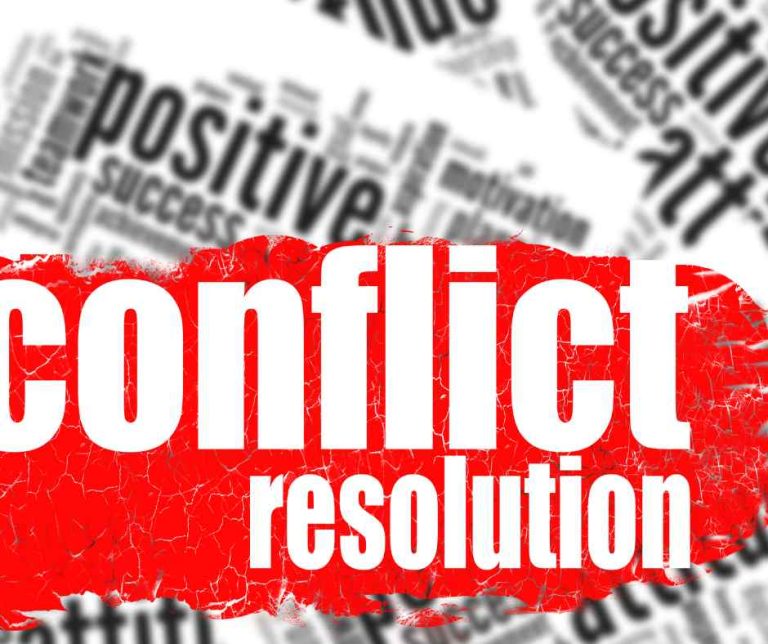When running your own business, challenges with the “team” is one of the most common challenges you will face. At ActionCOACH we find that a key issue is resolving conflicts and disagreements within a team and the successful resolution of this conflict is essential for maintaining a healthy and productive work environment.
At ActionCOACH we recommend a number of strategies to ensure a harmonious working atmosphere. Here are some strategies you can use to address conflicts and disagreements within your team:
- Encourage open communication: As a business owner/ leader, you need to create an atmosphere that allows for members of your team to express themselves. It is important that you encourage your team members to express their opinions, ideas, and concerns openly and respectfully. Develop the skill of active listening for yourself and also encourage members of your team to listen carefully to others so that you call all understand each other’s perspectives.
- Identify the source of the conflict: Determining the root cause of the conflict is an important early step. It could be a misunderstanding, a difference in opinion, or a clash of personalities and this will influence the decision you will make and the actions you will then take.
- Focus on the issues, not the people: Avoid personal attacks or blaming others. Instead, focus on the issues at hand and how they can be resolved. This is often where problems escalate and “personalities” come into it and emotions increase. Keeping things focussed on the issues helps to minimize the feelings of “personal attack” and people losing face or feeling embarrassed.
- Brainstorm solutions together: Encourage the team to work together to find solutions. If everyone is working together that will reduce the risk of the situation escalating as everyone will be positively focussed to work together and find a solution. Brainstorming sessions are a great way to create the right environment as they can help the team to generate new ideas and promote collaboration.
- Find common ground: At ActionCOACH we see this as a critical first step in resolving conflict. By finding common ground you are finding similarities and points of view that you share. By identifying areas where team members can agree and build on, you can build consensus and move forward with a resolution.
- Seek the help of a neutral third party: If the conflict persists, consider bringing in a neutral third party, such as a mediator or HR representative, to help facilitate the resolution process. The external point of view can often help those in the midst of a conflict, see the problem from a different point of view. The 3rd party is also likely to bring a sense of calm to the situation and help reduce the “temperature” between those parties in conflict.
- Follow-up: This is a crucial step! After a resolution has been reached, as a leader in your business, you must check in with team members to ensure that the solution is working and to prevent the conflict from recurring. You need to ensure that there are no lingering animosities and that everyone has moved past the issue. This is a good point to identify learning points from the conflict situation. This helps to ensure the same situation is not repeated and by considering what has been learnt, you can help move your business down the path of being a “learning organization”
By using these strategies, you can help your team resolve conflicts and disagreements in a productive and constructive way.

At ActionCOACH we offer a range of strategies to help resolve conflicts and here are some additional strategies that you may wish to use:
- Encourage empathy: Encourage team members to put themselves in each other’s shoes and try to understand each other’s perspectives. This can help build empathy and reduce misunderstandings.
- Use active listening techniques: Use active listening techniques such as repeating back what was said, clarifying points, and summarizing the conversation. This can help ensure that everyone is on the same page and can help prevent misunderstandings.
- Use compromise: Encourage team members to find a middle ground by compromising. This means that both sides may need to give up something in order to reach a mutually acceptable solution.
- Take a break: If emotions are running high, take a break from the discussion. Allow team members to step away and cool off before returning to the conversation.
- Be respectful: Ensure that all team members are treated with respect, even if you disagree with their point of view. It’s important to maintain a professional and respectful tone during discussions.
- Set ground rules: Establish ground rules for discussions, such as only one person speaking at a time, no interruptions, and a time limit for the discussion. This can help keep the discussion on track and prevent it from becoming too heated.
By using a combination of these strategies, you can help your team resolve conflicts and disagreements in a constructive and respectful way.
By Gary Hales

